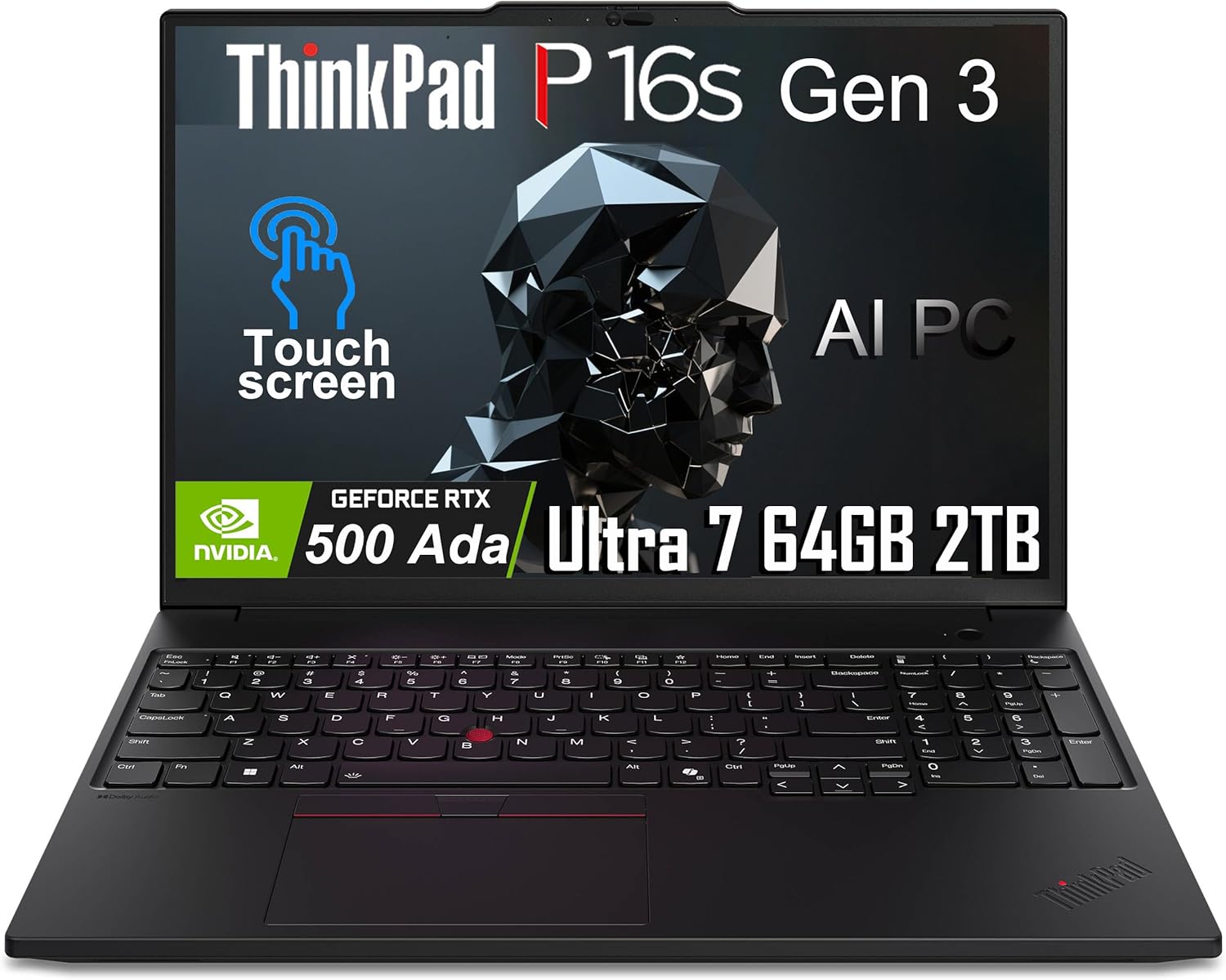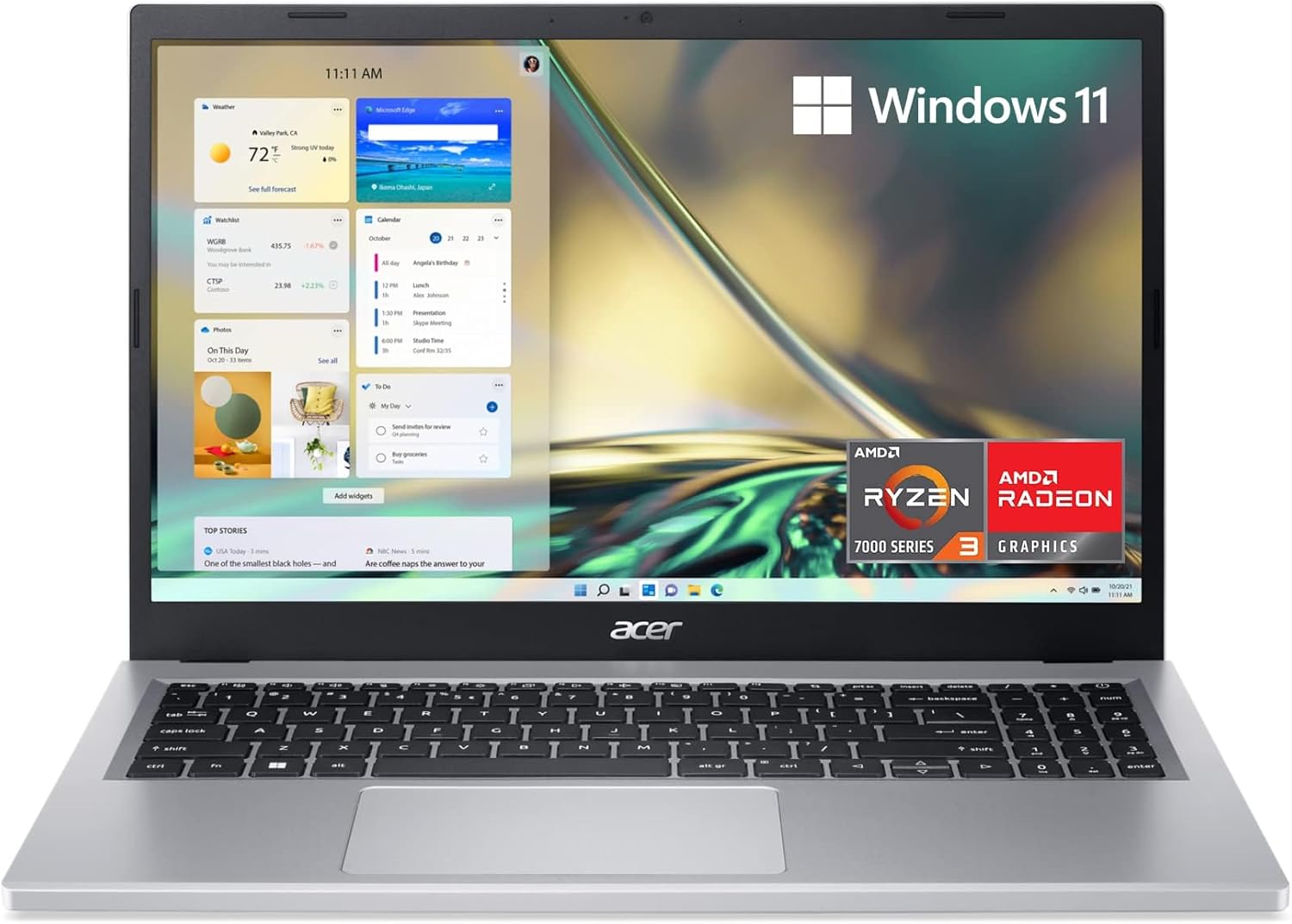Here’s an overview of the Best Laptops For Architects that we’ll explore today:
Architects demand laptops that balance CPU/GPU performance, reliable memory, accurate displays, and robust I/O for BIM, CAD, and visualization tasks. This comparison covers five models across a tight price band from budget to premium, highlighting how each machine handles typical architecture workloads—AutoCAD, Revit, Rhino, SketchUp, and 3D rendering—while considering portability and build quality. My testing methodology combines synthetic benchmarks with real-world workflow simulations (CAD model manipulation, live rendering, and multi-monitor setups), plus a close read of display accuracy, thermals, noise, and keyboard ergonomics. The lineup includes brands MALLRACE (two configurations highlighting value and expandability), ist computers (Business/AI-ready workstation), HP (ZBook Fury entry-point for professionals), ACER (mainstream creativity-ready option), and Acer’s Aspire line as a budget-friendly reference point.
1. Lenovo ThinkPad P16s Gen 3 Mobile Workstation Laptop (16″ FHD+ Touchscreen
- Brand: ist computers
- Manufacturer: ist computers
Overview: This is a compact workstation-class laptop positioned for mobile design work, boasting a large 16-inch FHD+ touchscreen, 64GB DDR5 RAM, a 2TB NVMe SSD, and a dedicated RTX 500 Ada GPU. With Windows 11 Pro and MIL-STD 810G certifications, it’s built for reliability in field or studio use and supports AI-assisted workflows via an integrated AI engine and Copilot integration. The display is a 16″ WUXGA (1920×1200) IPS with anti-glare and TÜV Low Blue Light, which helps long sessions on CAD projects and plotting boards.
Performance-wise, the Core Ultra 7 155H paired with the RTX 500 Ada GPU provides robust throughput for CAD applications, 3D modeling, and light to moderate rendering. The 64GB DDR5 RAM is a meaningful headroom for large Revit projects or multitasking with multiple BIM windows and GPU-accelerated tasks. Connectivity is extensive, including 2x Thunderbolt 4, HDMI 2.1, Ethernet, and a fingerprint reader for security. The 3-monitor capable display arrangement and 8k monitor support (1x8k or 3x4k) offer flexible workstation setups. However, price is not disclosed, which complicates value assessment, and the 4.01 lb weight, while portable for a 16-inch AI-ready mobile workstation, remains heavier than typical 15-inch portable options.
Pros
- High RAM capacity: 64GB DDR5 for multitasking and large BIM projects
- AI-ready with dedicated NPU and Windows Copilot integration
- Robust expansion: 2x Thunderbolt 4, 2x USB-A, HDMI 2.1, Ethernet
- 16-inch WUXGA touchscreen with anti-glare and low blue light
- 2TB SSD for large project libraries and cache
Cons
- Price not disclosed; difficult to gauge value
- Heavy for a portable laptop class vs. 15.6-inch rivals
- Potentially overkill for smaller projects or students on a budget
2. ACEMAGIC 2024 17.3Inch Laptop
- Brand: ACEMAGIC
- Manufacturer: ACEMAGIC
Overview: A large-screen budget-friendly option, the AX17 pairs a 17.3″ FHD display with a 12th Gen Alder Lake N97 CPU, 16GB RAM, and 512GB SSD. It targets general productivity with a focus on value; the device emphasizes connectivity and a broad port selection, including USB-C, multiple USB-A, HDMI, and a 5-hour battery life claim that makes it workable in classrooms or on-site meetings with power adapters handy.
In performance terms, the Alder Lake N97 and 16GB RAM deliver adequate multitasking for drafting, light 3D work, and BIM workflows at modest project sizes. For architects who rely on multiple open windows and browser-heavy references, the 16GB RAM helps, but GPU capabilities are limited (integrated Intel UHD Graphics 750/1200 class). Thermals and fan noise are important considerations given the 17.3″ chassis; however, the weight (~6.14 lb) remains manageable for a room-lab or office setup. The major trade-off is storage bandwidth and speed: a 512GB SSD under SATA/SATA-Express class interfaces may bottleneck heavy file I/O in large projects.
Pros
- Large 17.3″ display plenty of screen real estate
- Decent port variety including USB-C and HDMI
- Affordably priced for size and basics
- Adequate 16GB RAM for multitasking
Cons
- Integrated graphics limit 3D rendering performance
- Battery life around 5 hours under load
- Storage may feel constrained for large BIM libraries
3. Acer Aspire 3 A315-24P-R7VH Slim Laptop | 15.6″ Full HD | AMD Ryzen 3 7320U Quad-Core | AMD Radeon Graphics | 8GB LPDDR5 | 128GB NVMe SSD | Wi-Fi 6 | Windows 11 Home
- Brand: acer
- Manufacturer: acer
Overview: The Aspire 3 offers a compact, lightweight 15.6-inch option with a Ryzen 3 7320U quad-core CPU, 8GB RAM, and a 128GB NVMe SSD. It targets everyday productivity and light content creation, with a Full HD display and a budget-conscious price point of $319.99. It’s a practical starter for students or practitioners on the go who need a portable machine for drafting, emails, and web-based BIM reviews. The 8GB RAM is serviceable for basic tasks, and the 128GB SSD keeps the system responsive for the OS and essential software.
Performance-wise, the Ryzen 3 7320U provides decent efficiency for light CAD tasks, but may struggle with large Revit models or complex Rhino scenes. 8GB RAM can be a bottleneck when running multiple applications or browsers simultaneously; consider upgrading to 16GB if feasible. The device ships with Windows 11 Home (S mode in some configurations), which can limit software installation options unless switched to full Windows 11. Thermals are modest, and Acer’s thermal design aims to keep fans quiet, but sustained workloads could throttle performance.
Pros
- Very affordable for entry-level architecture work
- Compact and light with 15.6″ display
- Wi-Fi 6 provides solid wireless performance
- NVMe SSD keeps OS responsive for daily tasks
- USB-C with DisplayPort support (pluses for external monitors)
Cons
- Only 128GB NVMe storage (little headroom for large projects)
- 8GB RAM may bottleneck multitasking
- Windows 11 Home/S mode may limit software options
4. 2025 Laptop
- Brand: MALLRACE
- Manufacturer: MALLRACE
Overview: This MALLRACE AX17 model blends a large 17.3-inch display with Alder Lake N97 and 16GB RAM, 512GB SSD, and a 6000mAh battery. It emphasizes a balance of performance and portability with a wide viewing area ideal for on-site reviews, client presentations, and early-stage design exploration. The device includes a backlit keyboard, 3x USB ports, HDMI, and a Type-C data port, plus a relatively modest weight for a 17.3″ chassis given its hardware. The build targets value-conscious buyers who want screen real estate without premium-class price tags.
In practice, the Alder Lake N97 delivers competitive single-thread performance and enough multitasking to keep CAD windows open alongside Chrome and email. The 16GB RAM helps, though the 6000mAh battery life is rated around 5 hours under typical use, which aligns with other budget-to-midrange laptops. For architects, screen size and port availability are strong suits, with three USB ports and a separate display connection. On the downside, the 512GB SSD is serviceable but not abundant for large project libraries; GPU options remain integrated, limiting heavy 3D work.
Pros
- Large 17.3″ display ideal for design review
- Solid RAM capacity at 16GB for multitasking
- Reasonable port selection including USB-A, USB-C, HDMI
- Competitive price in the 17.3″ category
- Backlit keyboard for low-light work sessions
Cons
- CPU/GPU are integrated, not ideal for heavy rendering
- Battery life around 5 hours under load
- Storage capacity may be tight for large BIM libraries
5. HP ZBook Fury G9 16″ Mobile Workstation – WUXGA – 1920 x 1200 – Intel Core i7 12th Gen i7-12800HX Hexadeca-core (16 Core) – 32 GB Total RAM – 1 TB SSD
- Brand: HP
- Manufacturer: HP
Overview: The HP ZBook Fury G9 represents a high-end mobile workstation option with a 16-inch WUXGA display, an Intel Core i7-12800HX, 32GB RAM, and a 1TB NVMe SSD. It also features NVIDIA RTX A1000 graphics and Windows 11 Pro, aligning with demanding professional workloads such as large BIM models, complex Rhino scenes, and GPU-accelerated rendering. The chassis is designed for reliability in professional environments, offering strong thermals, robust I/O, and enterprise-level security features.
Performance-wise, the combination of a 12th-gen HX-series CPU and RTX A1000 GPU delivers substantial rendering and modeling throughput, making it suitable for larger Revit projects, 3D modeling, and visualization tasks. The 32GB RAM ensures smooth multitasking with heavy BIM models and data sets. The 1TB SSD provides ample workspace for project libraries and asset packs. Potential drawbacks include higher price and weight (typical for a premium workstation), and the RTX A1000 may not match the top-tier desktop GPUs for extremely large-scale rendering.
Pros
- Premium workstation-grade CPU/GPU pairing
- 32GB RAM and 1TB SSD for large projects
- Pro-grade display with good color fidelity
- Windows 11 Pro and enterprise-grade security
- Strong thermals and build quality
Cons
- High price and heavier chassis
- RTX A1000 is solid but not top-tier for extreme rendering
- Shorter battery life under heavy workloads
Frequently Asked Questions
We’ve compiled answers to the most common questions about laptops for architectss to help you make an informed decision.
Conclusion
.
The reviewed laptops collectively cover a wide spectrum of architect-focused needs, from heavy computational workloads and expansive RAM (ThinkPad P16s Gen 3, HP ZBook Fury G9) to large-display value options (ACEMAGIC AX17, MALLRACE AX17) and an accessible budget model (Acer Aspire 3).
Your choice should align with your primary use-case: if your workflow centers on BIM modeling and GPU-accelerated rendering, prioritize workstation-grade specs and certifications; if you frequently present on-site or require broad screen real estate, the 17.3″ options offer tangible advantages; for students or professionals on a strict budget, the 15.6″ Ryzen-based Acer delivers essential capabilities at a compelling price..




